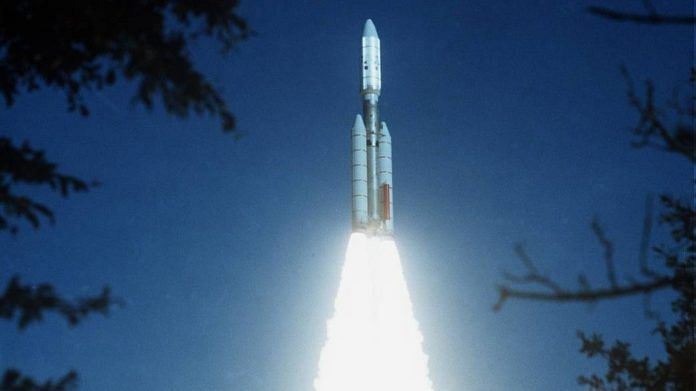Bengaluru: NASA has lost all communication with space-probe mission Voyager 2 after mistakenly sending a command that reoriented its antenna away from earth.
The error occurred in July, preventing the probe launched in 1977 from receiving commands from earth.
However, a routine scan of the sky revealed that the spacecraft was transmitting signals and was in good health.
NASA has said the probe will resume communication after October, when it is due for a reset. The space agency is continuing to attempt to revive contact.
Voyager 2 is nearly 20 billion kilometres from earth, flying at an estimated speed of over 15 kilometres per second. Commands that are transmitted at the speed of light take 18 hours to reach the probe. It is currently travelling through the interstellar medium, the region of space beyond the sun’s influence.
The spacecraft was launched by NASA in August of 1977 to study the outer planets and the interstellar medium beyond the heliosphere – or the outermost atmospheric layer of the sun beyond which the interstellar plasma in the Milky Way permeates.
Voyager 1 and 2, both launched the same year as part of the Voyager program, have crossed the “termination shock”, or the part of space where the solar wind (ionised particles from the sun) slows down suddenly due to the outside pressure of the interstellar medium.
Beyond that, at the theoretical region called the heliopause, the solar wind stops and the interstellar medium takes over entirely.
In 2018, Voyager 2 crossed the heliopause and entered interstellar space, and is the second farthest spacecraft from the sun after Voyager 1, which is about 24 billion kilometres away.
Voyager 2 crossed through notable milestones in its journey. It observed the outer planets and discovered a new moon of Jupiter, 11 of Uranus, and six of Neptune. It also spotted two new rings of Uranus that were created by a broken up moon, and two new rings of Neptune.
The spacecraft also went through some bumps with software updates and heater temperatures. It is expected to start losing power to instruments by 2026. While it is not heading towards a particular destination, it is expected to have a close approach within a few light years of the star Ross 248 in 42,000 years, and will approach within 4.3 light years of Sirius in 296,000 years.
Also read: Voyager Space and Airbus deepen tie-up on new space station



